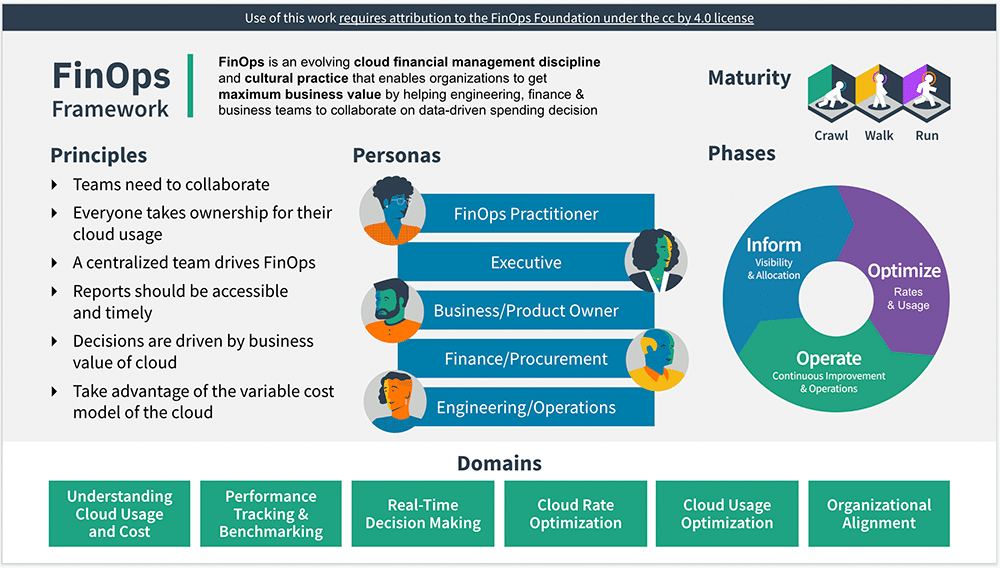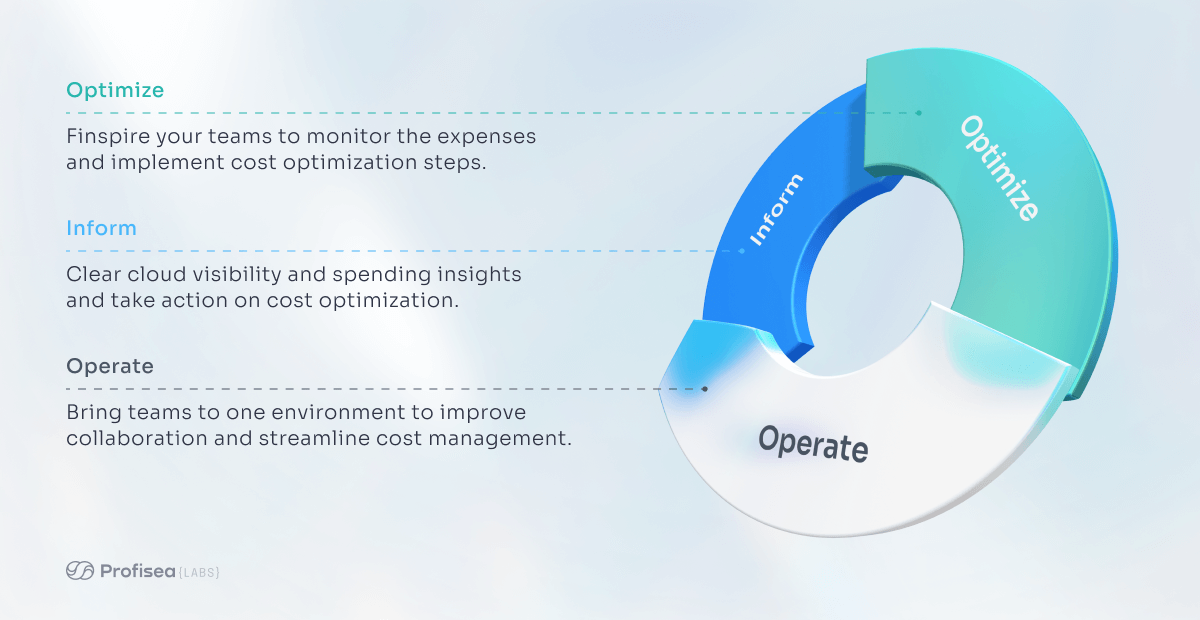As companies race towards digital transformation, cloud costs threaten to become runaway expenditures that undermine ROI. Unfortunately, many organizations resort to blunt cost cutting, resulting in technical debt and degraded systems. As an experienced DevOps leader, you understand the need for nuance when optimizing cloud infrastructure spend.
This article contributed by Talent500 experts equips you with battle-tested techniques to materially reduce cloud costs without compromising performance, availability or velocity. Tactics span technological, cultural and accountability realms including:
- Infusing FinOps Disciplines into Engineering Culture
- Rightscaling Instances and Clusters with Data-driven Utilization Insights
- Architecting for Discount Purchasing Programs and Interruptible Workloads
- Building Auto-scaling Rules and Resource Scheduling
- Implementing Cloud Infrastructure-as-Code
- Enabling Granular Cost Allocation and Optimization Tracking
Combined, these create sustainable optimizations unlocked by empowered teams – not reactive blunt cuts. The framework instills financial accountability within engineering workflows themselves.
Let’s explore each aspect:
Infusing FinOps Disciplines into Engineering Culture
FinOps promotes informed cloud cost decision-making through cross-functional collaboration between technology, finance and business teams. At its crux, FinOps is a cultural shift rendering cost optimization intrinsic to feature development.

(Credits)
As a DevOps leader advocating its adoption, your first move is equipping engineers to consider dollars alongside performance. Expose teams directly to cloud cost signals and drivers including S3 storage pricing, data transfer fees and instance types. Similarly, showcase how architectural choices manifest in budget impacts and savings opportunities.
Arm developers with context, then enable behaviors reinforcing visibility. For example, implement self-remediation workflows allowing teams to independently debug spend anomalies and uncover optimization opportunities without tickets.
Additionally, inject cloud cost metrics like month-to-date consumption directly into dashboards, logs and alerts alongside application data. Put spending visibility alongside performance statistics. When engineers access application health, also show cost deviations. This trains developers to instinctively consider cost a key metric for holistic system optimization.
Rightscaling Instances and Clusters with Data-driven Utilization Insights
Overprovisioned instances and clusters represent massive remediable spend. Rightscaling realigns capacities and instance sizing to actual workload requirements.
Begin by leveraging granular utilization data to reveal oversized resources. Signals indicating overprovisioning include:
- Chronically low CPU/RAM utilization
- Bursty traffic spikes amidst extended unused capacity
- Oversized databases unsuitable for transaction volumes
Drill into historical metrics and real-time monitoring to systematically pinpoint waste. Cloudability provides invaluable insights here paired with performance monitoring tools like Datadog.
Once opportunities surface, rightsize intelligently via automation:
- Downsize instance types when appropriate (e.g. m5.2xlarge -> m5.xlarge)
- Scale in cluster node counts during traffic troughs
- Resize bulky databases to suitable instance sizes
Also expose instance and cluster resizing directly to developers through self-service. By providing visibility into waste, you enable them to rightsize resources aligned to their direct operational insights.
Architecting for Discount Purchasing Programs and Interruptible Workloads
Beyond judicious resource sizing, capitalize on the significant cloud discounts available:
Reservation Discounts
Leverage 1-3 year reservation commitments netting deep discounts – often over 70% hourly instance savings. Analyze historical data to project future capacity patterns and lock-in discounts through RIs scoped to expected growth.
Ephemeral Discounts
Embrace interruptibility within fault-tolerant batch workflows to enable major short-term discounts. AWS Spot instances provide unused capacity at up to 90% off. Similarly, Google Cloud preemptible VMs exchange immediate eviction notice for low prices.
Architects select workloads to gracefully handle termination, unlocking these considerable ephemeral discounts. Stack Spot and preemptible usage alongside more durable instances to optimize blend.
Building Auto-Scaling Rules and Resource Scheduling
To sustain optimizations at scale, automate provisioning aligned to end-user demand signals and resource idle times.
Implement auto scaling rules triggering the dynamic adding and removal of instances based on load metrics and thresholds. This prevents over-provisioning during fluctuations.
Similarly, leverage instance scheduling to terminate non-production resources like staging sites and testing clusters during nights, weekends and other defined periods of inactivity.
Combined, these automation techniques rightsizes resources and eliminates waste transparently based on ecosystem signals.
Implementing Cloud Infrastructure-as-Code
Infrastructure-as-Code (IaC) accelerates cloud optimization by enabling reproduction of standardized architectures rapidly across environments using declarative templates.
Within IaC tools like Terraform, mandate cost visibility configurations like tagging schemas and autoscaling thresholds as first-class parameters. This bakes FinOps fundamentals into the foundations of all stack deployments.
Moreover, architects discount purchasing opportunities like Spot Instances and RIs as code to accelerate adoption. Encapsulate proven cost-optimized components for easy reuse driving efficiency.
Enabling Granular Cost Allocation and Optimization Tracking
To sustain an optimization culture, promote individual accountability by connecting consumption directly to teams through granular cost allocation. Tag all resources accordingly and map to stakeholders. Provide self-service cloud spend reports for transparency.

(Credits)
Further, set explicit cloud savings targets for both individuals and teams via OKRs or performance incentives tied to cost reductions realized. Maintain a Cloud FinOps Center of Excellence to routinely track optimization progress and recognize savings contributions.
This ties professional growth directly to cost excellence, incentivizing efficiency operationalized through architecture.
Summing Up: Holistic and Sustainable Cloud Optimizations
Migrating systems to the cloud promises improved scalability and velocity. But uncontrolled waste threatens budget overruns undermining ROI. Knee-jerk resource cuts degrade systems, frustrating stakeholders clamoring for cloud benefits.
Instead, take a structured approach improving efficiency through technological automation combined with cultural change that empowers teams.
Implement FinOps to graft cost accountability onto feature development using education, self-service visibility and embedded metrics exposure. Eliminate resource overprovisioning by rightsizing intelligently from data-driven utilization insights. Seek discount purchasing programs compatible with existing pipelines like reservations and interrupted workloads. Enact lifecycle automation through auto-scaling policies, resource scheduling and IaC cost guardrails.
When these technical capabilities merge with cultural adoption and individual accountability driven by allocated tracking, cloud cost optimizations sustainably compound. Teams perpetually identify and remediate waste guided by shoulders-to-shoulder collaboration between cloud financial management leaders and site reliability engineers.
The outcome? Continued delivery of the cloud’s full capabilities – scalability, resilience and acceleration of deployments – without financial burden. Developers gain both the tools and incentives to build cost-efficient systems instinctively.
So modernize fearlessly. With the comprehensive approach outlined above, you can confidently harness the cloud’s true potential for your business services while controlling expenses for continued success. Your developers stay focused on shipping groundbreaking features fast without cost anxieties. And your CFO happily funds more projects recognizing your stewardship over cloud investments. Now is the time to actualize innovation.
About Talent500: Talent500 is an AI-driven talent management platform for businesses around the globe. If you are looking for high growth DevOps jobs in some of the world’s best organizations with a high TC, signup on Talent500 now!
For enterprises, you can register here to find the top talent.






Add comment